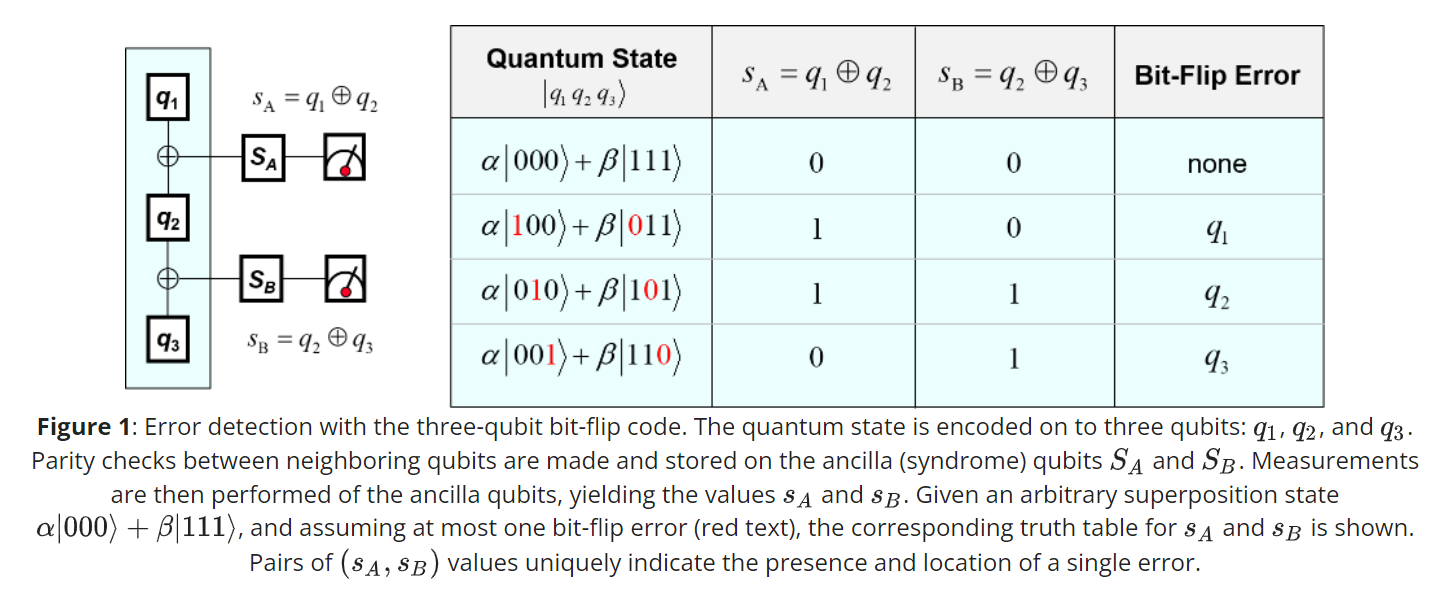Introduction to Quantum Computing
Syndrome Measurement
Error correcting codes use a syndrome measurement to determine which error corrupts an encoded state. An error can then be reversed by applying a corrective operation based on the specific syndrome. The output of the parity measurement is called a syndrome. The syndrome, then, can tell us if and where an error occurred.
Quantum error correction (QEC) also employs syndrome measurements. QEC performs a multi-qubit measurement that does not disturb the quantum information in the encoded state but retrieves information about the error. Depending on the QEC code used, syndrome measurement can determine the occurrence, location and type of errors.
In most QEC codes, the type of error is either a bit flip, or a sign (phase) flip, or both . The syndrome measurement provides information about the error that has happened, but not about the information that is stored in the logical qubit.

References:
- Quantum Error Correction:
https://en.wikipedia.org/wiki/Quantum_error_correction - Qiskit:
https://qiskit.org
